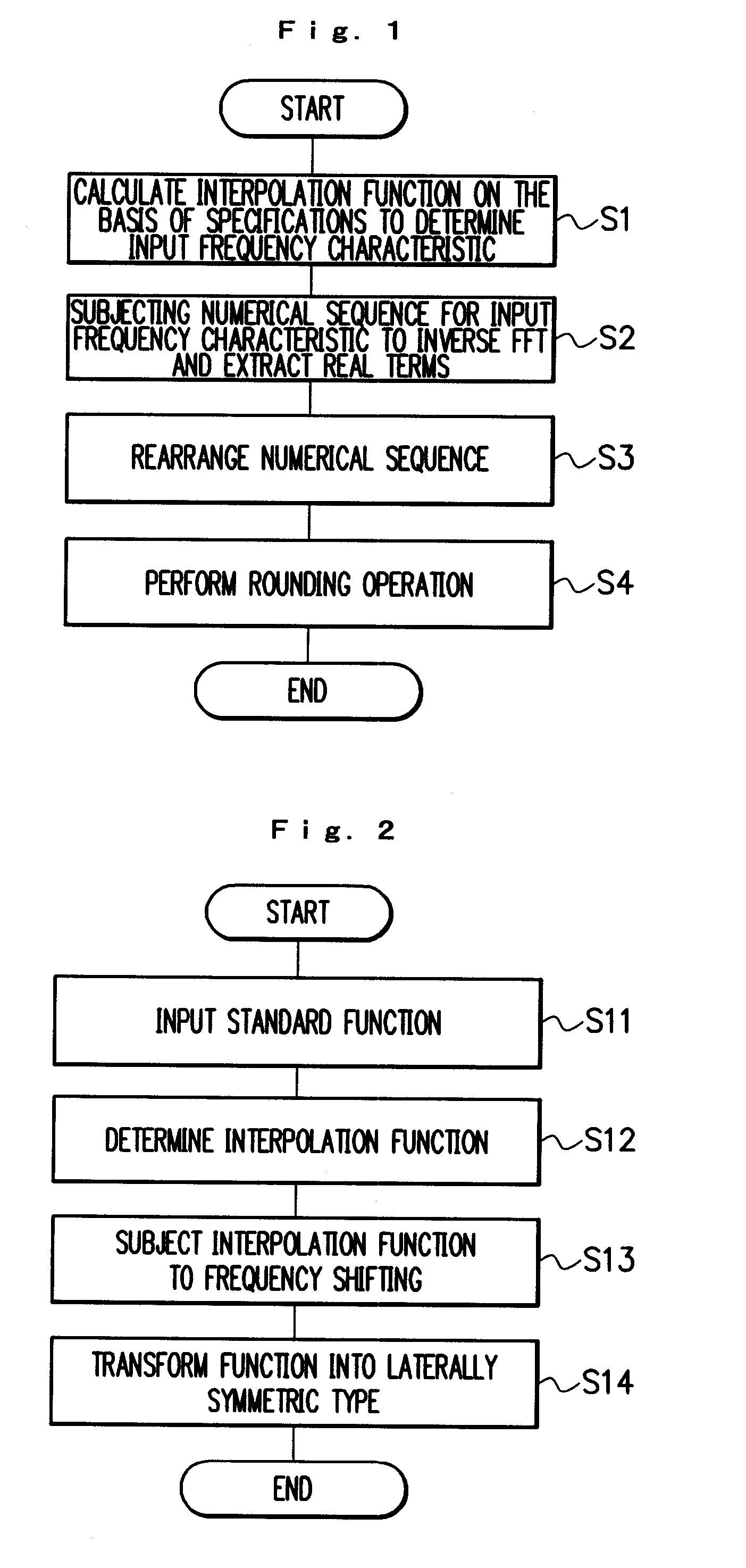Methods, devices, and programs for designing a digital filter and for generating a numerical sequence of desired frequency characteristics
a numerical sequence and filter technology, applied in the field of digital filter design, can solve the problems of determining an enormous number of filter coefficients of very complicated, random values, increasing the number of taps in the filter circuit, etc., and achieves the effect of reducing the number of filter coefficients, and reducing the accuracy of frequency characteristics
- Summary
- Abstract
- Description
- Claims
- Application Information
AI Technical Summary
Benefits of technology
Problems solved by technology
Method used
Image
Examples
Embodiment Construction
[0062] An embodiment of the present invention will be described with reference to the drawings. FIG. 1 is a flowchart showing a process procedure of a method of designing a digital filter according to the present embodiment. A digital filter to be designed is an FIR filter of a type that comprises a tapped delay line made up of a plurality of delayers and which multiplies signals from respective taps severalfold and adds up multiplication results for output. The flowchart in FIG. 1 shows a method for determining filter coefficients for an FIR filter.
[0063] As shown in FIG. 1, first, an interpolation function is calculated on the basis of specifications for a filter to be designed. The calculated interpolation function is then used to determine an input frequency characteristic (step S1). The interpolation function to be calculated interpolates the range between the maximum and minimum amplitude values for a frequency amplitude characteristic based on the specifications for the filt...
PUM
 Login to View More
Login to View More Abstract
Description
Claims
Application Information
 Login to View More
Login to View More - R&D
- Intellectual Property
- Life Sciences
- Materials
- Tech Scout
- Unparalleled Data Quality
- Higher Quality Content
- 60% Fewer Hallucinations
Browse by: Latest US Patents, China's latest patents, Technical Efficacy Thesaurus, Application Domain, Technology Topic, Popular Technical Reports.
© 2025 PatSnap. All rights reserved.Legal|Privacy policy|Modern Slavery Act Transparency Statement|Sitemap|About US| Contact US: help@patsnap.com



